Accounting and Investment: Impression Management & Investor Decisions
VerifiedAdded on 2020/04/01
|5
|733
|108
Report
AI Summary
This report investigates the influence of impression management strategies, particularly the order of textual presentation and the use of graphical elements, on the investment decisions of non-professional investors. The study highlights that non-professional investors, lacking the experience and knowledge of their professional counterparts, are more susceptible to cognitive biases and the recency effect. Companies often employ self-promotion strategies, manipulating the presentation of information to influence investor perceptions. Research indicates that the placement of negative and positive information within financial documents significantly impacts investment choices. For example, presenting positive information at the end of a document can increase the likelihood of investment. The report concludes that textual presentation order and graphical cues can significantly impact the decisions of non-professional investors, making them vulnerable to impression management tactics, especially by underperforming companies. The report references supporting research and provides insights into the practical implications of these findings within the financial market.
1 out of 5
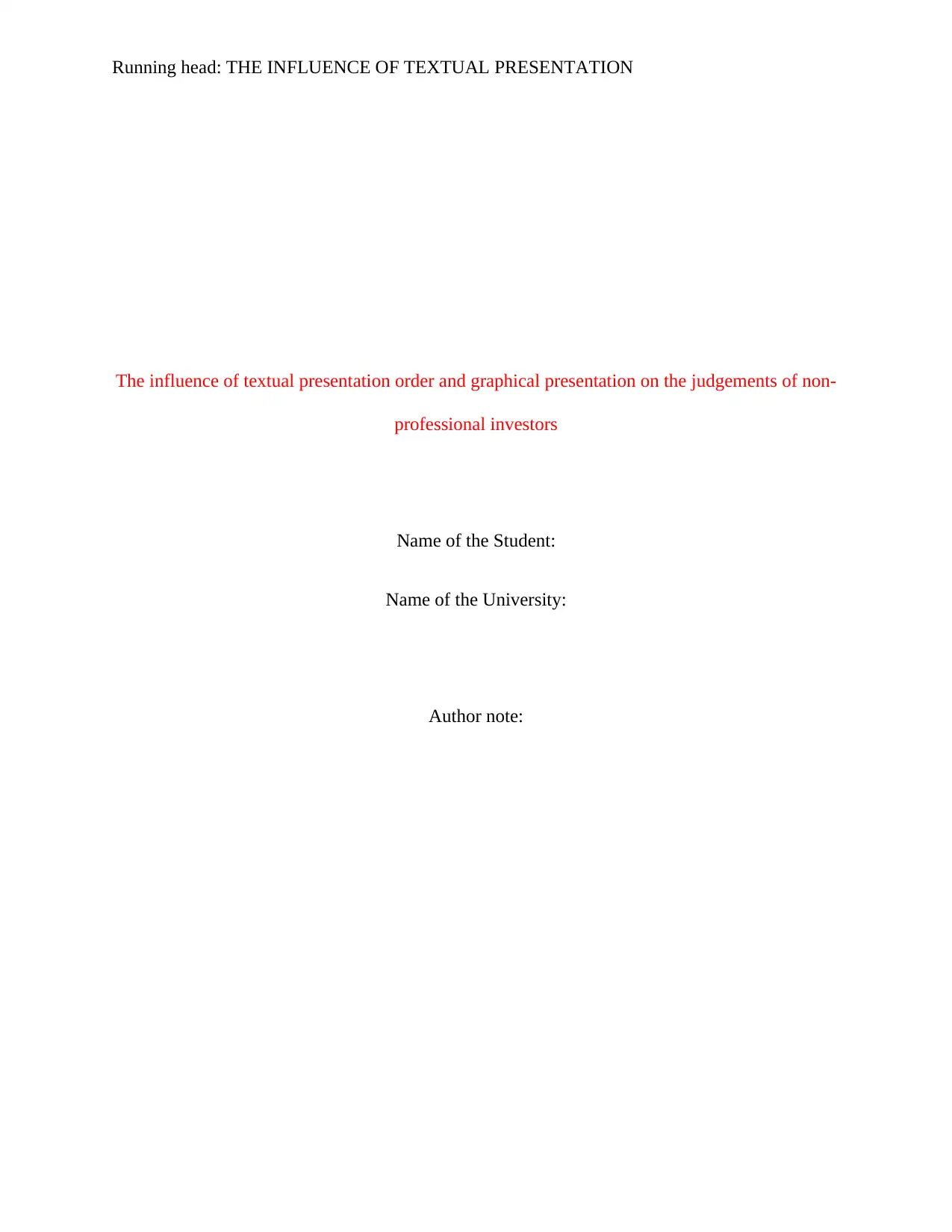
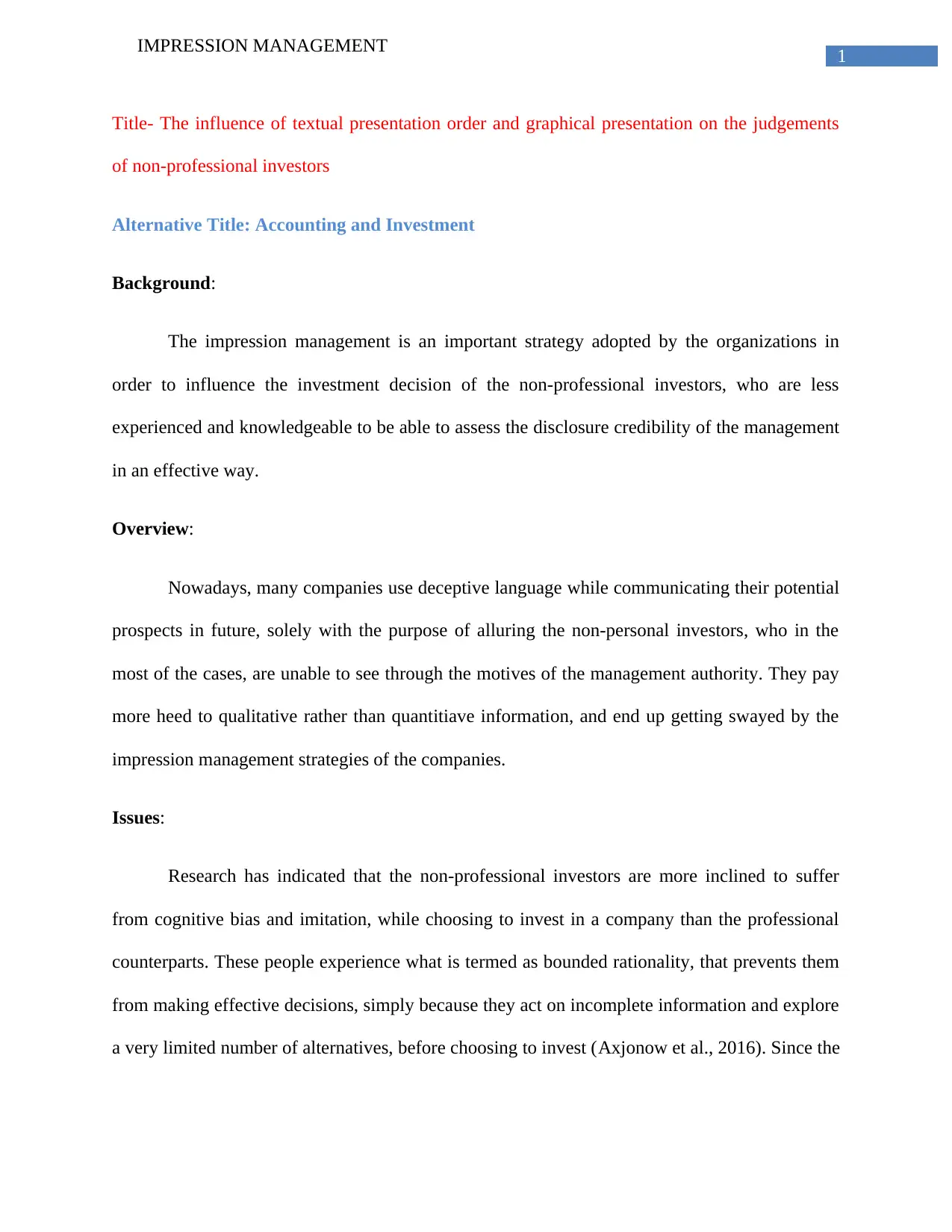
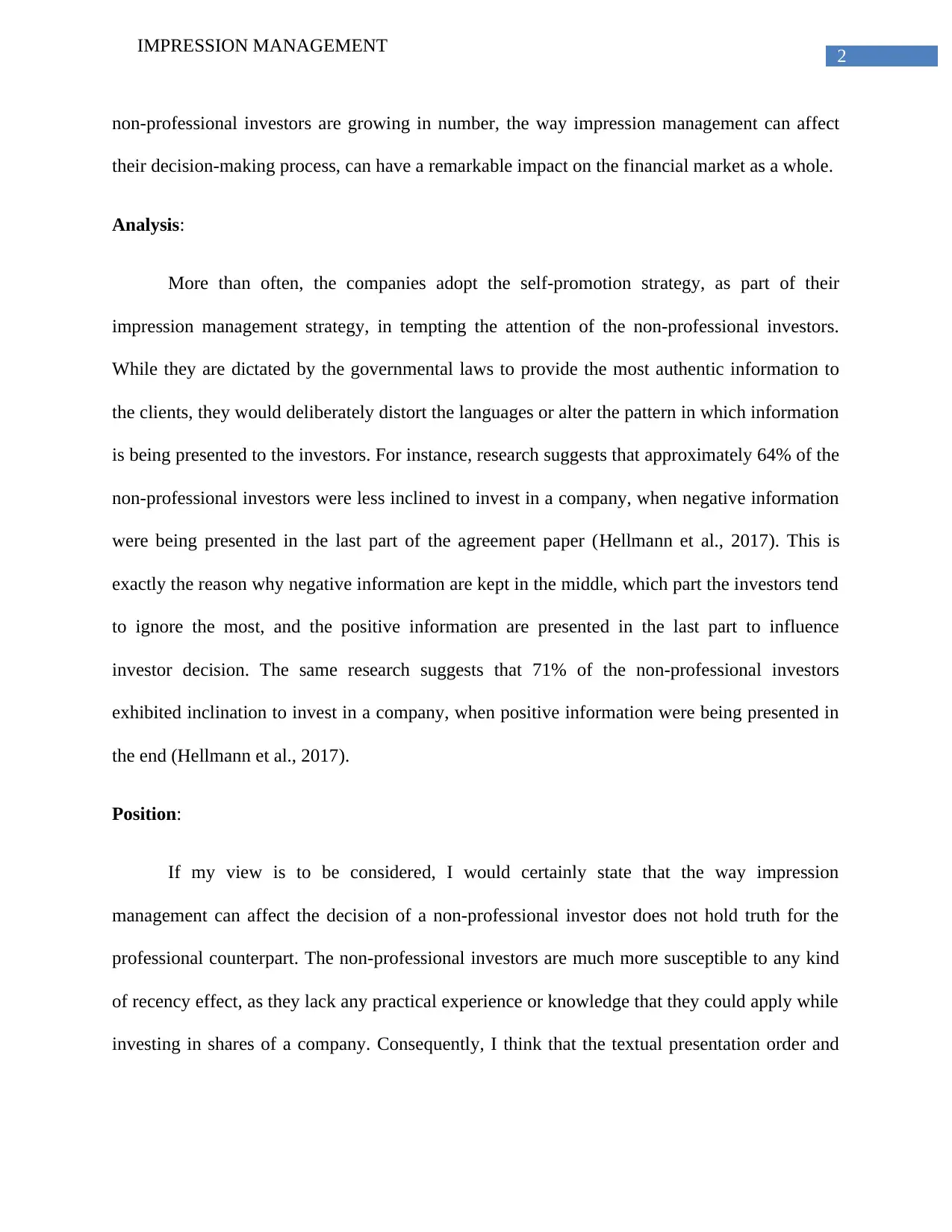

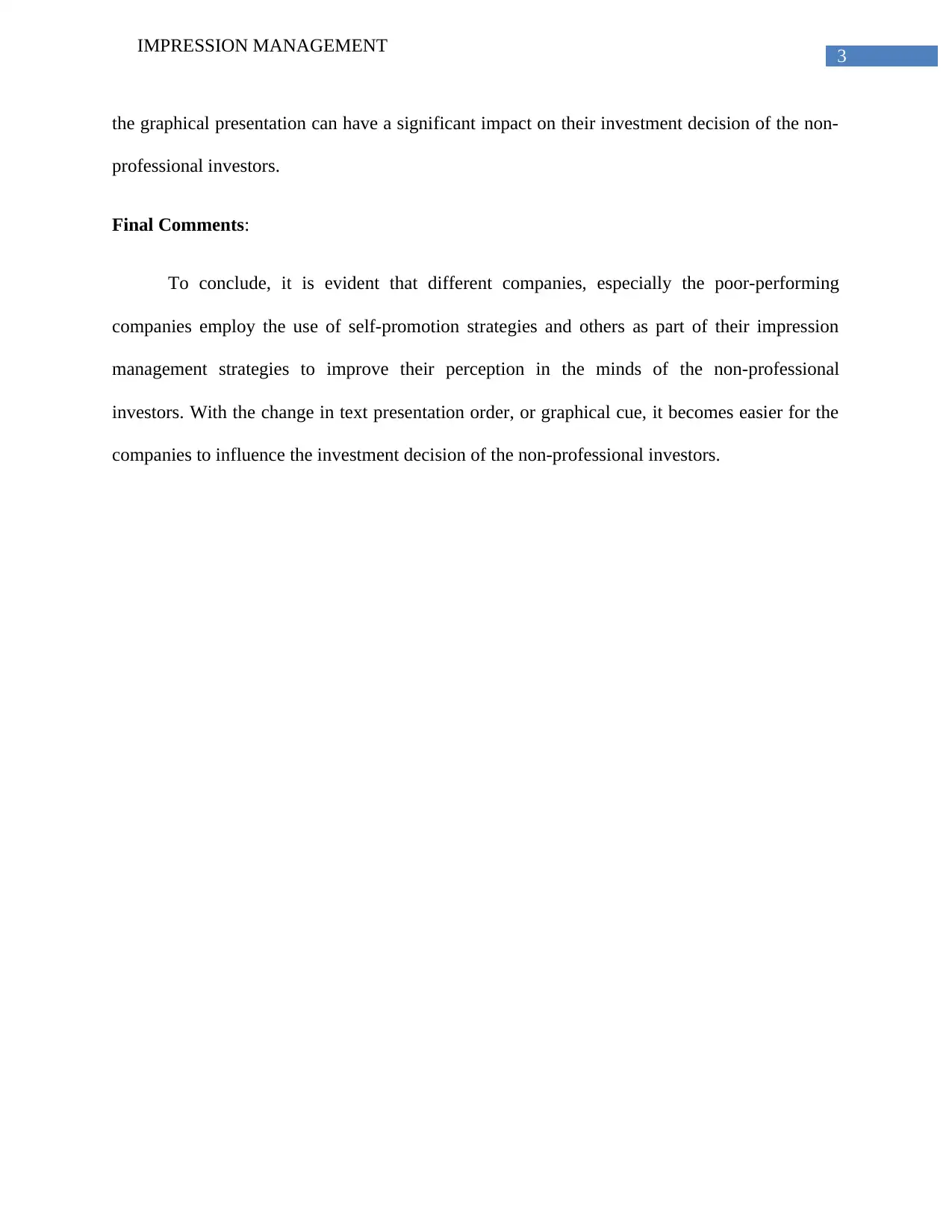
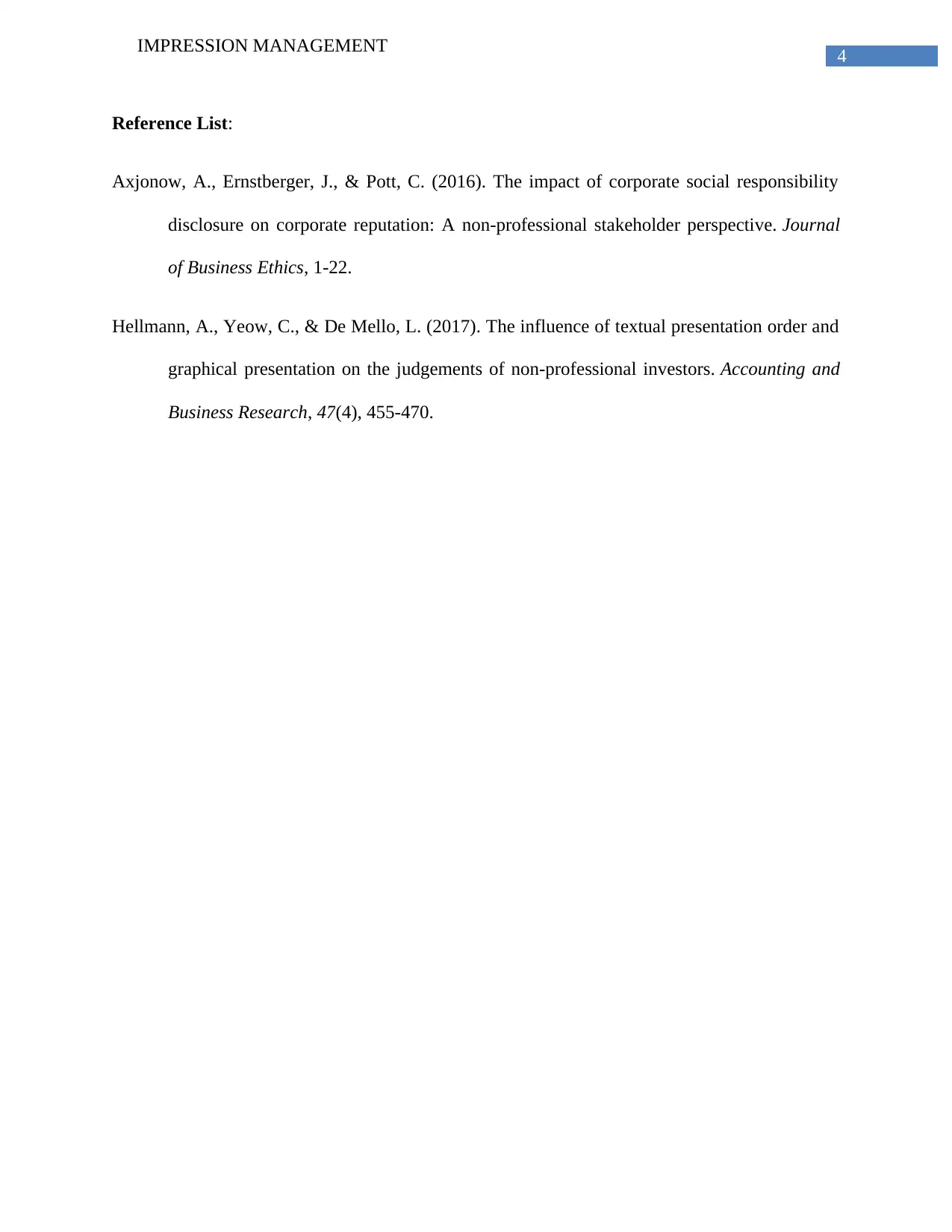






![[object Object]](/_next/static/media/star-bottom.7253800d.svg)